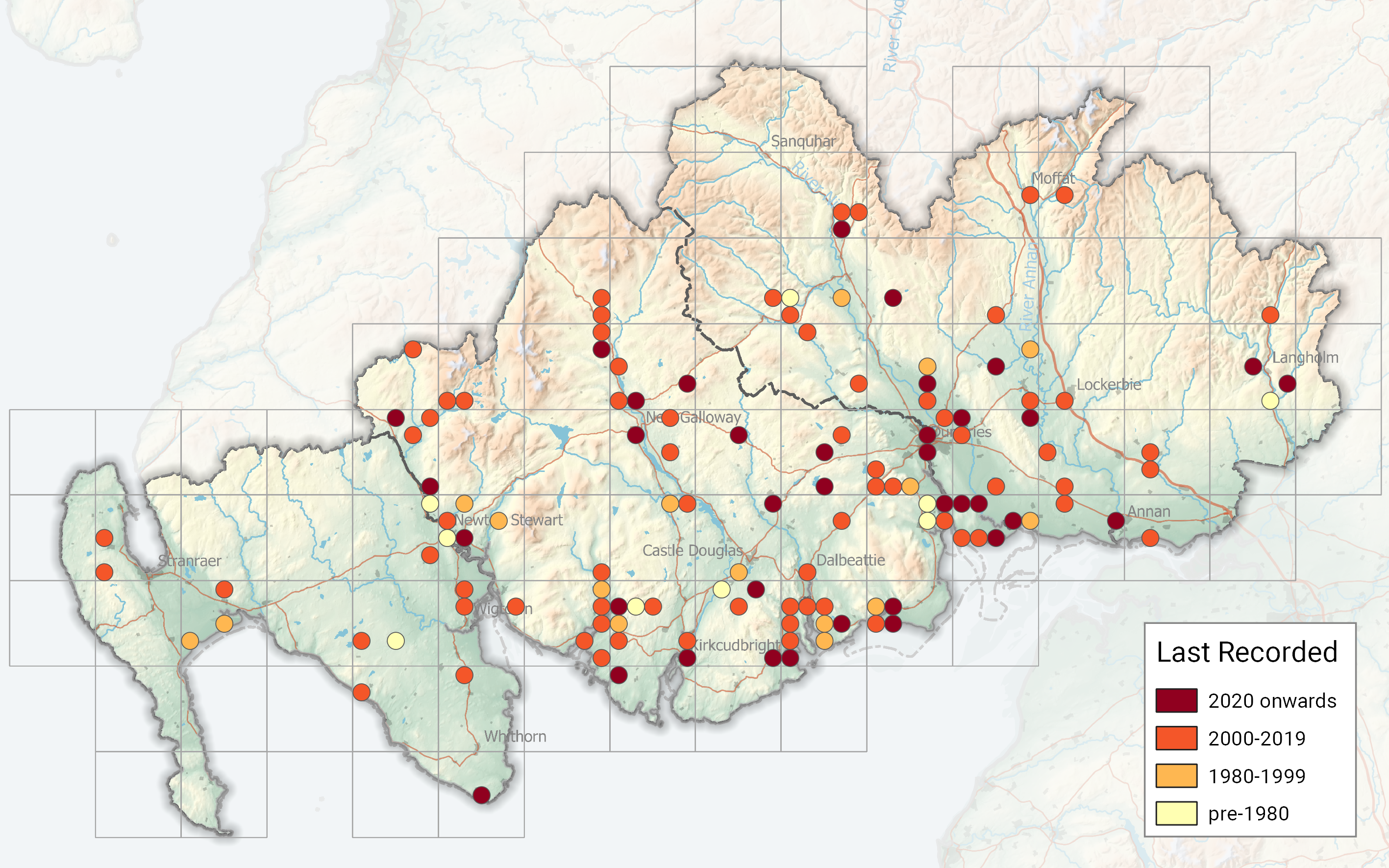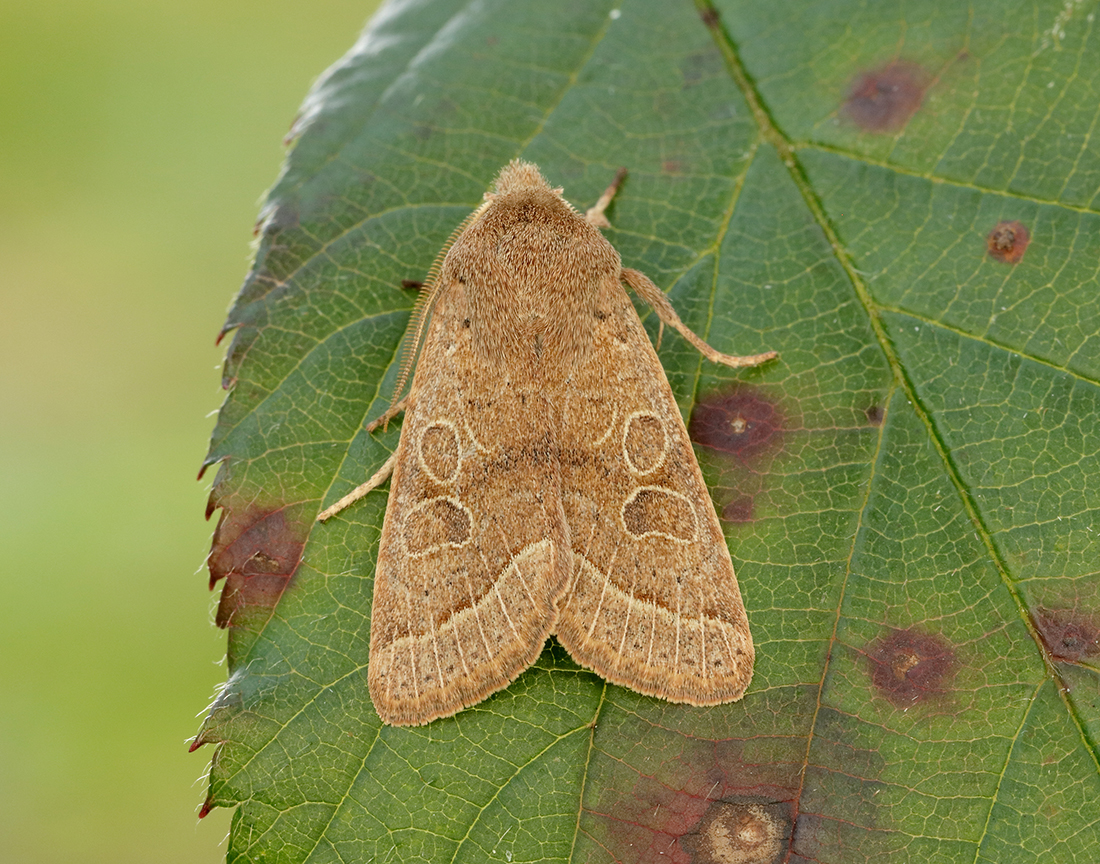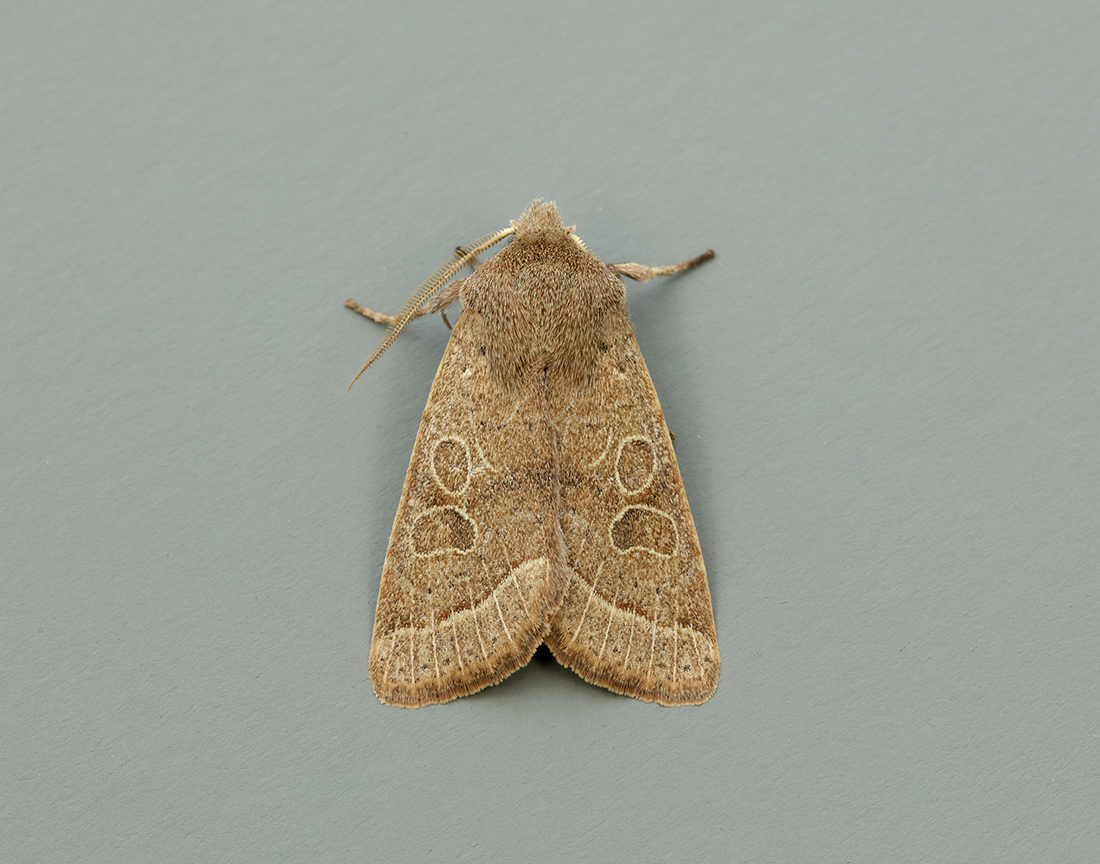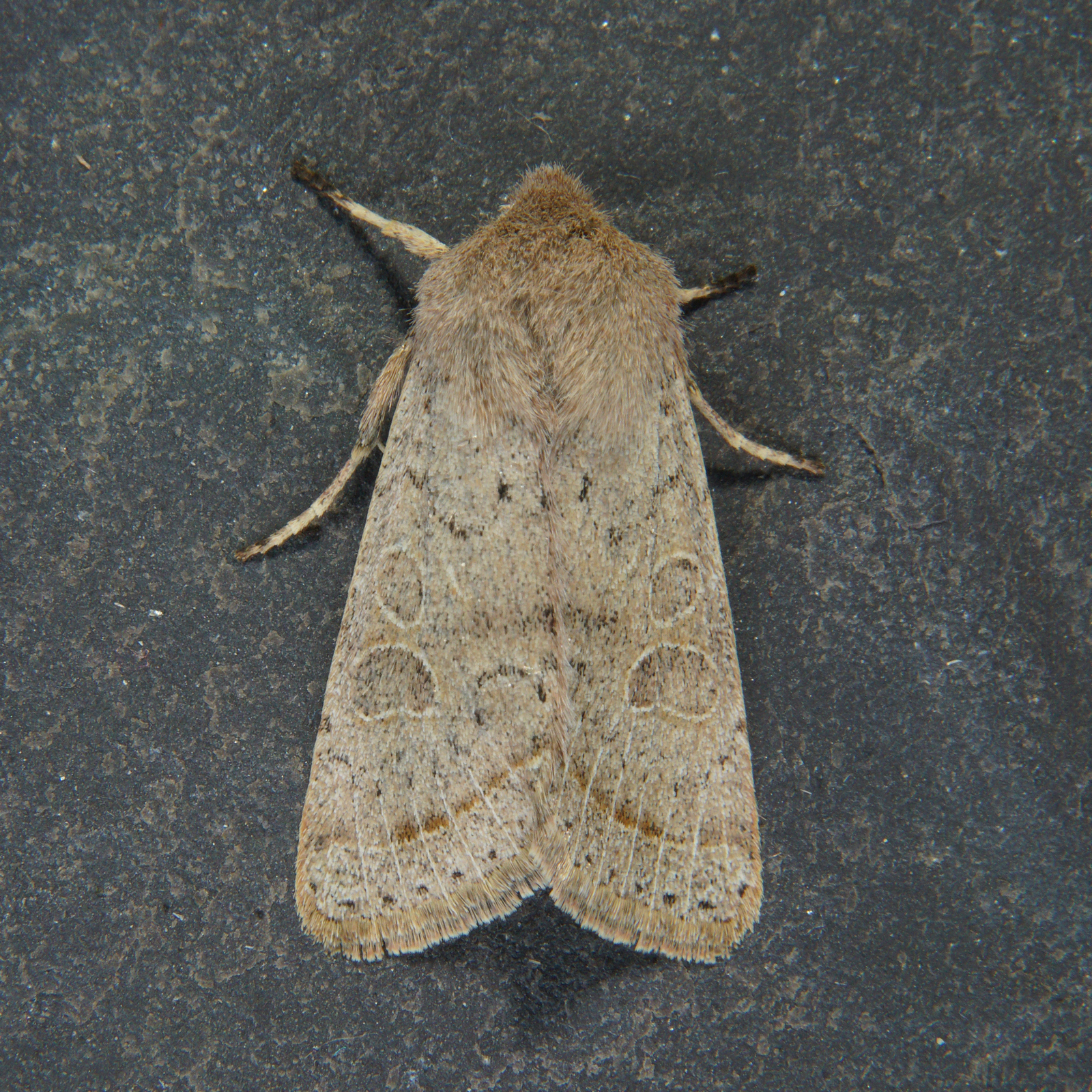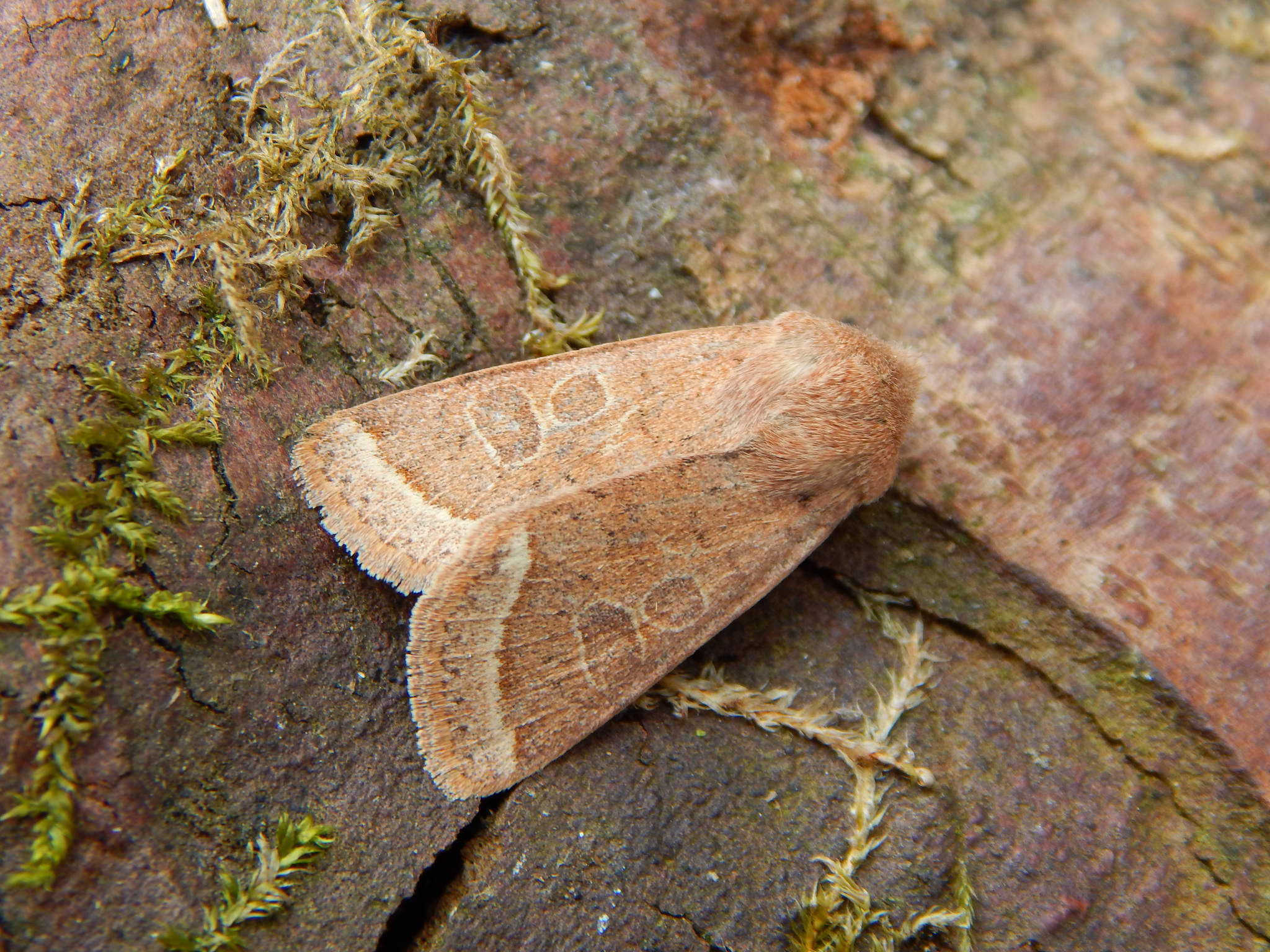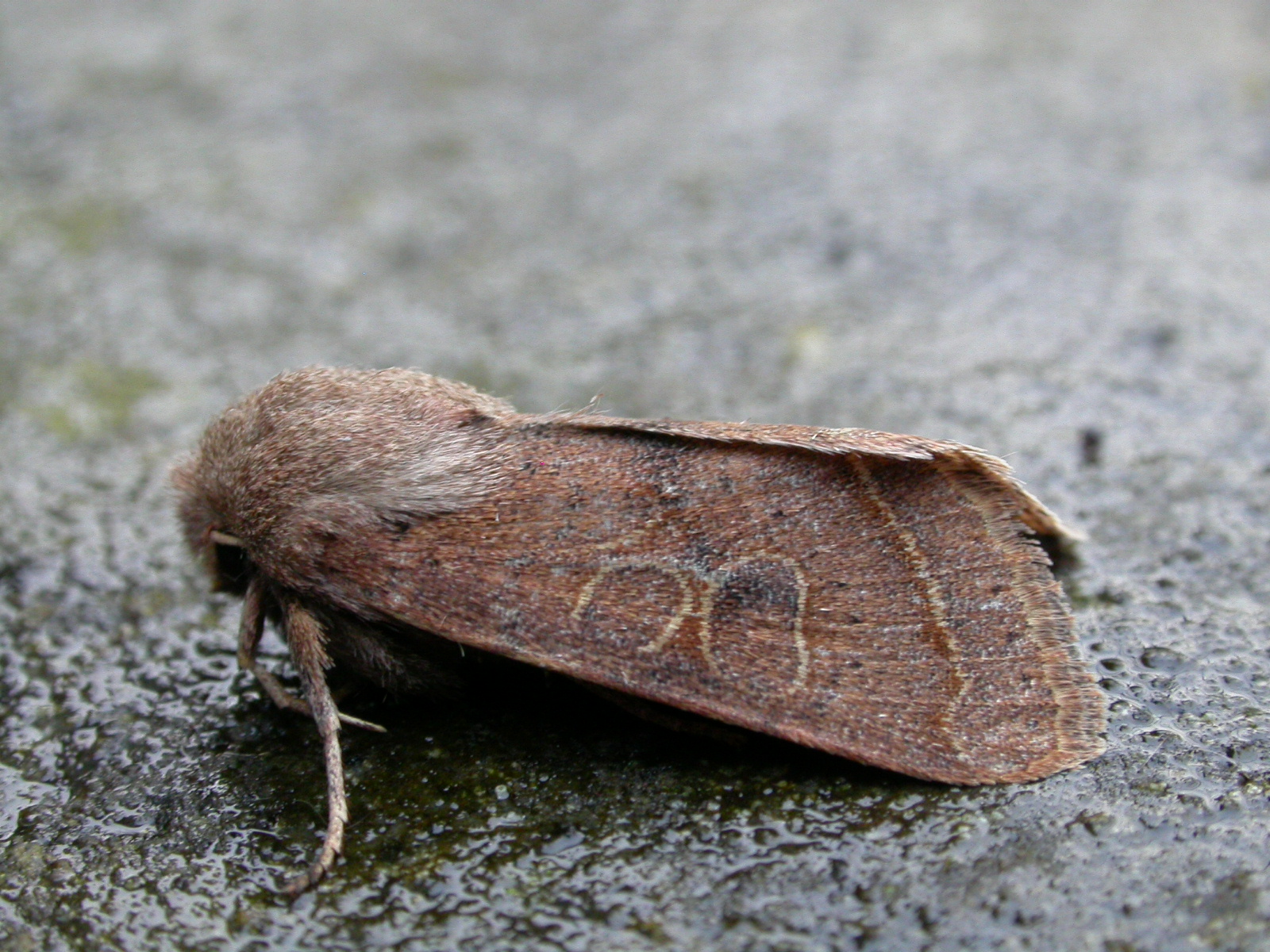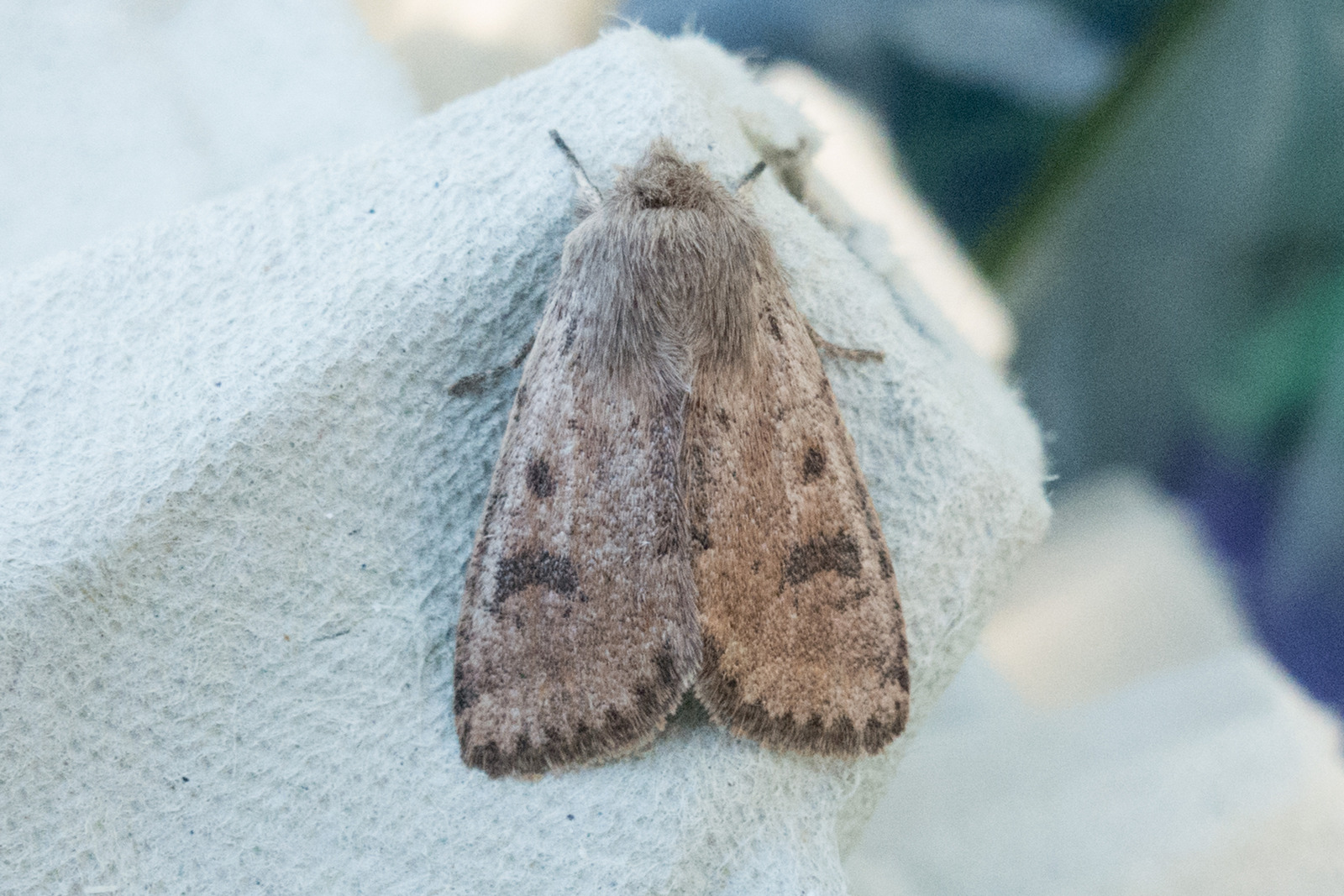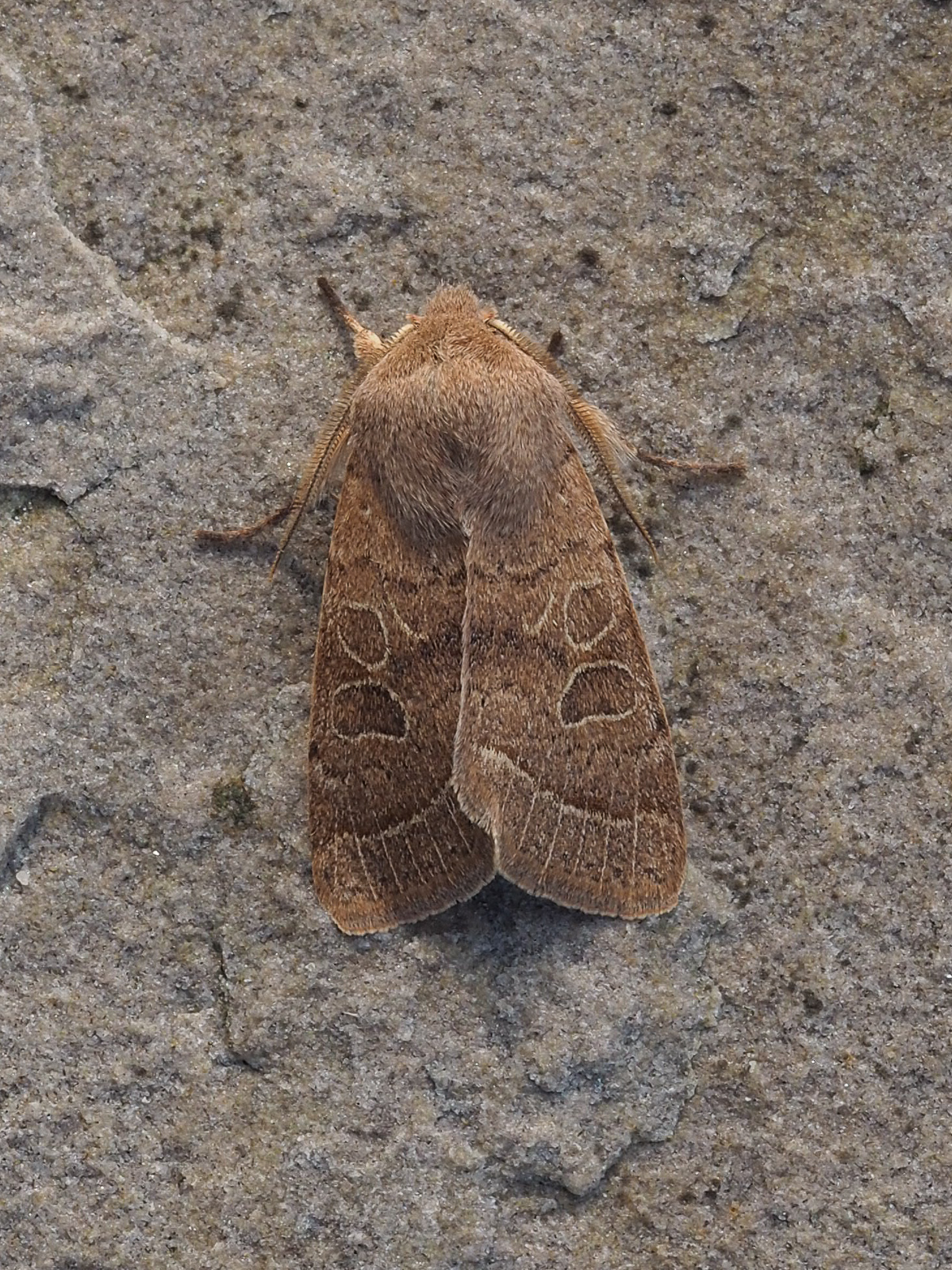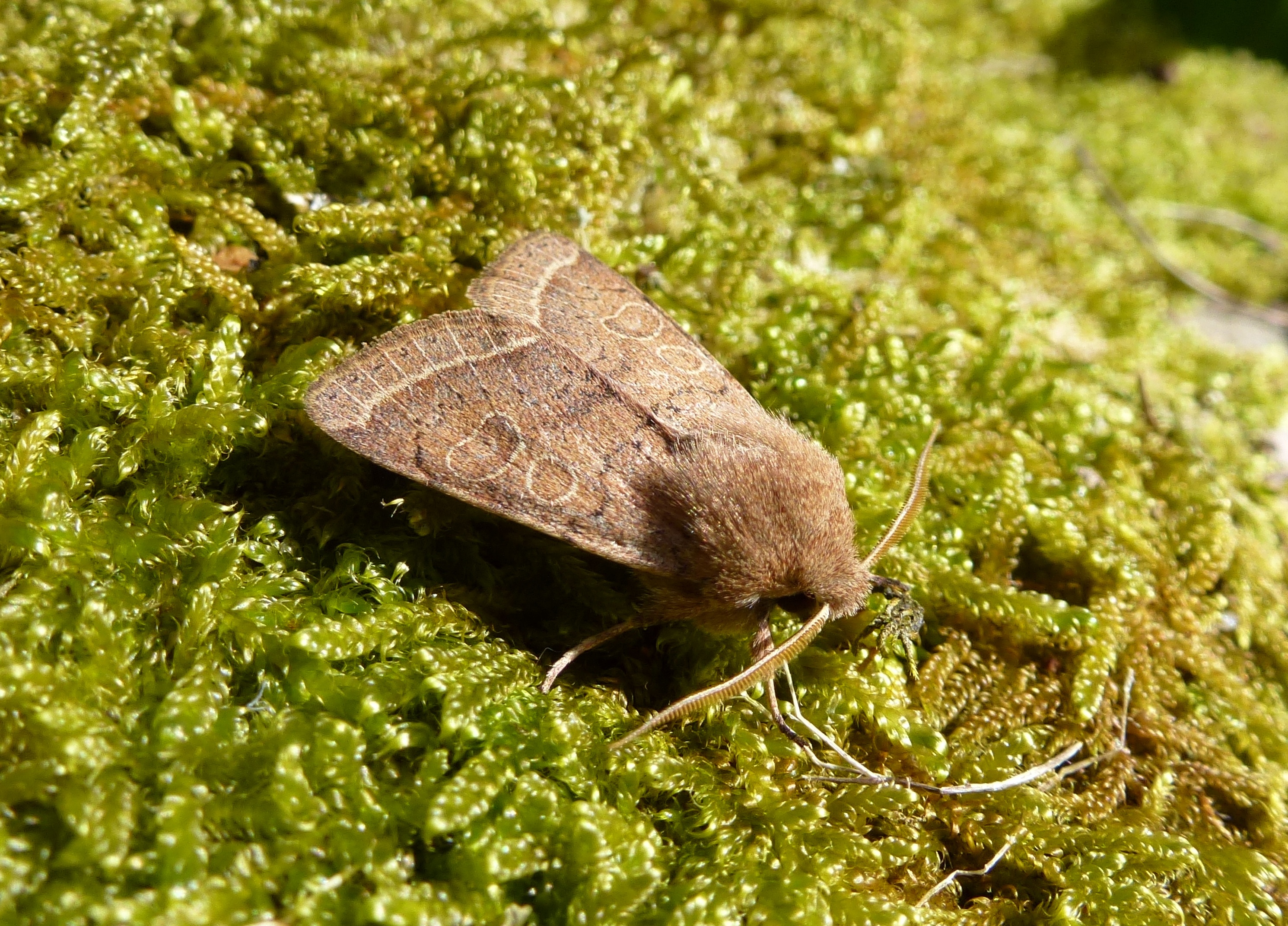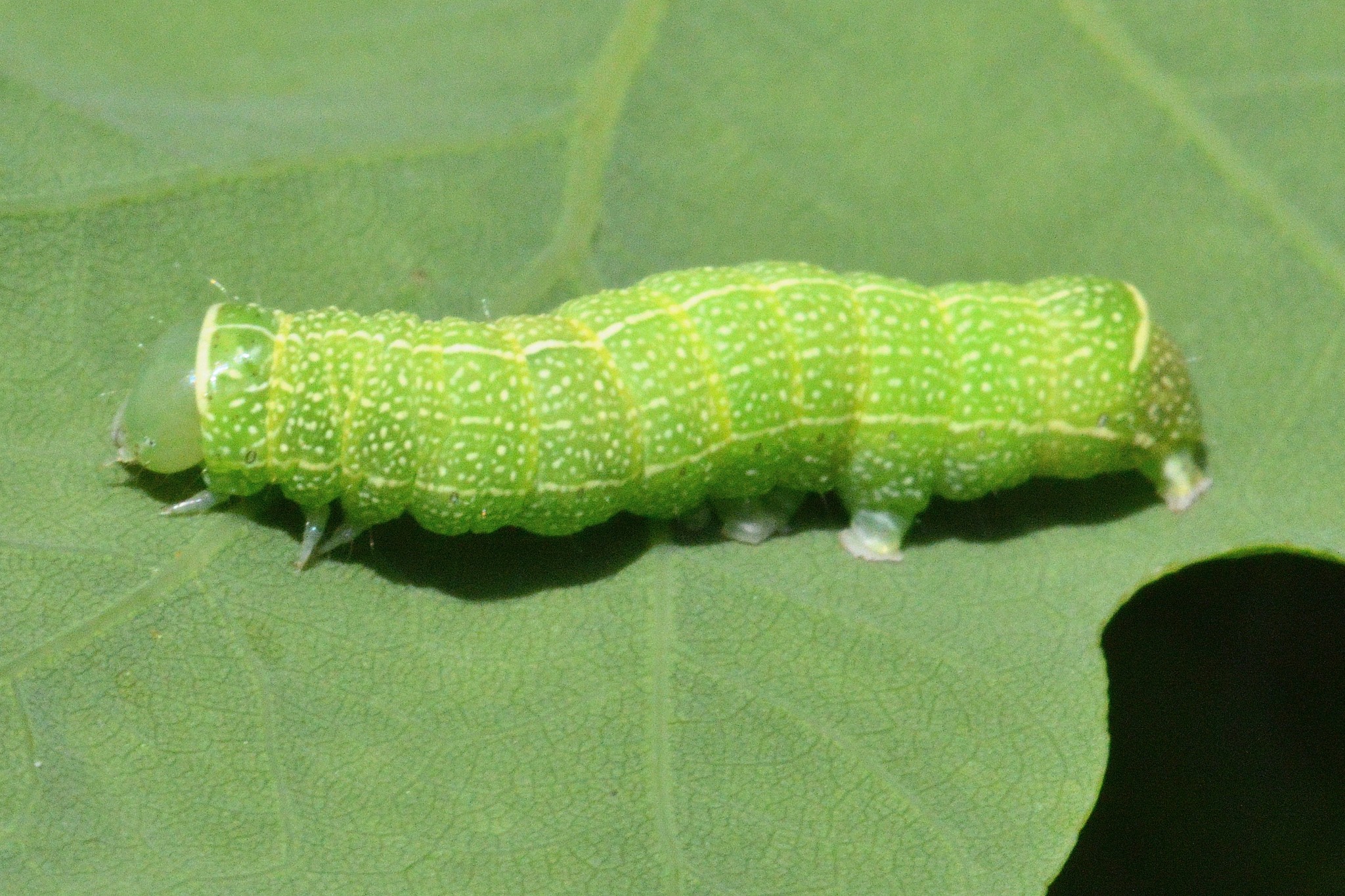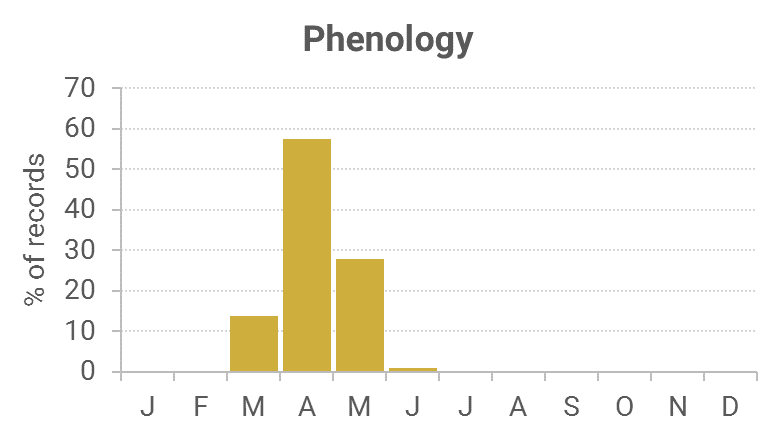See also Moth of the Week (10/04/2020)
Identification
Recognised by the brown, round-tipped forewing with prominent pale-outlined kidney-mark and oval, together with a uniform grey hindwing.
Recording Method.
Attracted to light, also comes to sugar and flowers.
Life cycle
One generation. Overwinters as a pupa in a cocoon underground, with the adult fully formed inside. Larvae are present during April and June, living at first in young buds, then in spun shoots or leaves, finally under a leaf.
Larval foodplants
Oaks, birches, elms, hazel and sallows.
Habitat
Many habitats, but as larvae feed on broadleaved trees, most common in woodland.
History
Lennon (1863) stated it to be common everywhere around the Dumfries area. Gordon (1913) stated it was generally distributed and abundant in Wigtownshire, being found on sallow blossom in a very variable state. Earliest date was 23rd March 1906. Sir Arthur Duncan (1909-84) during his lifetime had found it at Closeburn, Tynron and Castlehill, Dumfries (all VC72). Archibald Russell (1944) listed it as occurring near Gatehouse of Fleet (VC73) during the years 1942-43.
Pelham-Clinton between 1954 and 1968 had found it at Glenluce (VC74), Bargrennan, Wood of Cree, Palnackie and Rockcliffe (all VC73). Then, during 1974-92 all seven Rothamsted stations regularly recorded it. From 1992 to 2010 Kirkton and Durisdeer (VC72), Cally Woods, Kirkcudbright, Milton and Carsfad near Dalry, provided the majority of records, with a number of other records from widespread sites across the region.

